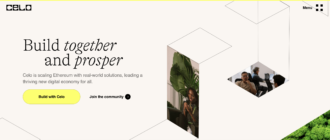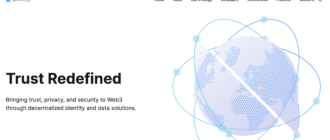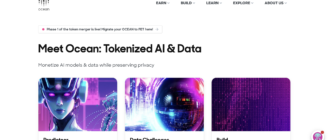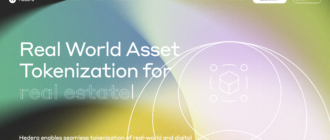This article delves into the Unifi Protocol DAO and its native cryptocurrency, UNFI. It will explore the project’s inception, technological infrastructure, tokenomics, ecosystem, growth prospects, and future outlook. Unifi Protocol DAO stands out in the DeFi space by offering innovative multi-chain solutions and governance mechanisms aimed at fostering a sustainable and scalable blockchain economy.
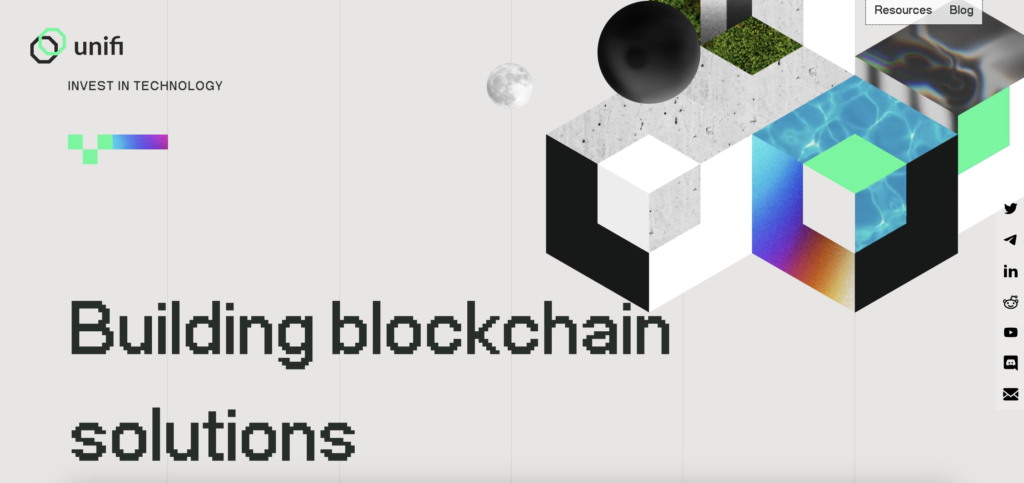
What is Unifi Protocol DAO?
Unifi Protocol DAO is a decentralized finance (DeFi) ecosystem designed to connect various blockchain networks through its multi-chain, interoperable smart contracts. The project aims to create a sustainable blockchain economy by leveraging a multi-token system and innovative DeFi products. The core objective of Unifi Protocol DAO is to enable seamless, low-cost cross-chain trading and to foster economic sustainability within the blockchain space. By eliminating the need for a native gas token, the protocol reduces transaction volatility and inflation, making it a more predictable platform for businesses.
At the heart of Unifi Protocol DAO is the governance token UNFI, which empowers token holders to participate in the network’s governance, propose changes, and vote on critical decisions. The protocol also includes UP tokens, which are used to incentivize liquidity providers and integrate the rewards system across its ecosystem.
Project History
Unifi Protocol DAO was established in 2018, originating from a multi-chain staking community. Over the years, the project has marked several significant milestones:
- 2018: The inception of the Unifi Protocol DAO, beginning as a multi-chain staking community with the goal of integrating modern technology into global finance through decentralization.
- 2019: Development of the uBridge, a multichain bridge that allows seamless transfer of network tokens and other assets between different blockchains.
- 2020: Launch of uTrade, a multichain decentralized exchange (DEX) that enables decentralized cryptocurrency swaps. This year also saw the introduction of an Automated Market Maker (AMM) and the implementation of staking and “no-stake farming” features.
- 2020: Unifi Protocol DAO was listed on Binance Launchpool, enhancing its visibility and accessibility within the DeFi community.
- 2021: Expansion of the protocol’s multi-chain capabilities, integrating with additional blockchains and enhancing its DeFi product offerings.
- 2022: Continuous growth in community engagement and development of new DeFi products, further solidifying its presence in the decentralized finance space.
Throughout its development, Unifi Protocol DAO has focused on creating a comprehensive DeFi ecosystem, connecting various blockchain networks, and promoting economic sustainability within the blockchain industry.
How Does Unifi Protocol DAO Work?
Unifi Protocol DAO leverages several cutting-edge technologies to build a comprehensive and interoperable DeFi ecosystem. The project is constructed on a multi-chain architecture, enabling it to operate across multiple blockchain networks seamlessly. This interoperability is a key differentiator, allowing Unifi Protocol DAO to facilitate low-cost, cross-chain trading and offer a broad range of decentralized finance services.
Key Technologies
- Smart Contracts: Unifi Protocol DAO utilizes a suite of interoperable, non-custodial smart contracts that connect various DeFi marketplaces. These smart contracts enable decentralized exchanges (DEXs), staking, and liquidity mining across multiple blockchain platforms. The smart contracts are designed to be flexible and secure, supporting the seamless integration of new DeFi products and services.
- Multi-Token System: The ecosystem is powered by two primary tokens – UNFI and UP. UNFI serves as the governance token, granting holders the right to vote on proposals and participate in the decision-making processes of the DAO. UP tokens are used as rewards for liquidity providers and are directly linked to the transaction activities within the ecosystem, ensuring that the incentives align with user participation and network growth.
- uBridge: This multichain bridge technology allows assets to be transferred between different blockchains without the need for intermediaries. uBridge facilitates interoperability and enhances liquidity across the ecosystem by enabling the movement of tokens across chains efficiently and securely.
- uTrade: Unifi Protocol DAO’s decentralized exchange (DEX) operates across multiple blockchains, offering users a platform to trade cryptocurrencies in a decentralized manner. uTrade integrates an Automated Market Maker (AMM) mechanism, which provides liquidity and price discovery without relying on traditional order books.
Blockchain and Consensus Mechanism
Unifi Protocol DAO employs a Delegated Proof-of-Stake (DPoS) consensus mechanism to secure its network. Here’s how it works:
- Delegated Proof-of-Stake (DPoS): In DPoS, network participants (token holders) vote to elect a small number of delegates who are responsible for validating transactions and maintaining the blockchain. This model enhances scalability and reduces the energy consumption typically associated with Proof-of-Work (PoW) systems.
- Staking and Governance: UNFI token holders can stake their tokens to earn rewards and participate in governance. By staking UNFI, holders receive voting power, which they can delegate to community representatives or use to vote directly on proposals affecting the network’s operations and development.
- Economic Sustainability: Unlike many blockchain projects that rely on inflationary native tokens to pay for transaction fees, Unifi Protocol DAO aims to build a sustainable economic model. By utilizing stablecoins for transaction fees and offering predictable staking rewards, the protocol reduces the volatility and inflation that can undermine other blockchain networks.
Unique Features
- Interoperability: Unifi Protocol DAO’s ability to operate across multiple blockchains sets it apart from many other DeFi projects. This multi-chain approach ensures that the protocol can tap into a larger liquidity pool and offer a more versatile platform for DeFi users.
- Decentralized Governance: The governance structure of Unifi Protocol DAO is designed to be fully decentralized, giving all stakeholders a voice in the platform’s future. This democratized approach to decision-making enhances the transparency and community involvement in the protocol’s evolution.
- No Native Gas Token: By not relying on a native gas token, Unifi Protocol DAO eliminates transaction volatility and inflation, providing a more stable and predictable environment for users and developers alike.
In summary, Unifi Protocol DAO distinguishes itself through its robust multi-chain infrastructure, innovative use of smart contracts, and a sustainable economic model. The project’s focus on interoperability and decentralized governance further enhances its appeal as a leading platform in the decentralized finance space.
Tokenomics of Unifi Protocol DAO
Is it a Token or a Coin?
Unifi Protocol DAO’s native asset, UNFI, is a token, not a coin. Tokens operate on existing blockchains, while coins typically have their own blockchains. UNFI exists as an ERC-20 token on Ethereum and a BEP-20 token on Binance Smart Chain, making it a multi-chain asset.
Tokenomics
UNFI serves as the governance token within the Unifi Protocol DAO ecosystem. It empowers holders to vote on proposals and influence the direction of the protocol. This multi-chain token ensures that governance is decentralized and inclusive across different blockchain networks.
Emission Model
UNFI has a capped supply, with a maximum of 10 million tokens. This fixed supply helps mitigate inflationary pressures and supports long-term value. The current circulating supply is approximately 8.63 million tokens, reflecting a gradual release mechanism designed to balance availability with demand.
The distribution of UNFI tokens is structured as follows:
- 51%: Allocated to liquidity providers and ecosystem development.
- 15%: Reserved for the founding team and major developers.
- 12%: Designated for private sales.
- 10.5%: Used to support ecosystem initiatives.
- 6.5%: Allocated for seed sale.
- 4%: Distributed via Binance Launchpool.
- 1%: Allocated to the BNB Chain ecosystem.
Token Price and Market Performance
As of May 2024, UNFI is trading at approximately $3.77, with a market capitalization of around $31.43 million. The token has experienced significant volatility, with its all-time high reaching $43.62 in March 2021 and an all-time low of $0.044 in May 2022. These price fluctuations reflect the dynamic nature of the cryptocurrency market and the evolving adoption of the Unifi Protocol DAO.
Unique Features
- Governance and Staking: UNFI holders can stake their tokens to earn rewards and participate in the governance process. This staking mechanism is integral to the protocol’s Delegated Proof-of-Stake (DPoS) consensus model, which enhances security and network integrity.
- Interoperability: By existing on multiple blockchains, UNFI supports cross-chain interactions and liquidity, setting it apart from tokens limited to a single blockchain.
- Sustainable Economics: The protocol uses stablecoins for transaction fees, reducing volatility and ensuring a predictable economic environment for users and developers.
Unifi Protocol DAO’s tokenomics are designed to foster a robust, sustainable, and decentralized ecosystem, leveraging innovative mechanisms to support its long-term growth and stability.
Where to Buy UNFI
UNFI, the governance token of Unifi Protocol DAO, is available on several major cryptocurrency exchanges. Here are some of the top platforms where you can purchase UNFI:
- Binance: Binance offers a wide range of trading pairs for UNFI, including UNFI/USDT, UNFI/BTC, UNFI/BNB, and UNFI/BUSD. Binance provides high liquidity and a robust trading platform for both beginners and experienced traders.
- HTX (formerly Huobi): HTX supports the trading of UNFI with pairs like UNFI/USDT. Known for its security and user-friendly interface, HTX is a popular choice for many traders.
- MEXC: MEXC lists UNFI and provides various trading pairs, including UNFI/USDT. The exchange is recognized for its competitive trading fees and comprehensive range of trading tools.
- Gate.io: Gate.io offers trading for UNFI with pairs such as UNFI/USDT. The platform is well-regarded for its advanced trading features and robust security measures.
- KuCoin: KuCoin supports UNFI trading with pairs like UNFI/USDT. KuCoin is known for its extensive selection of cryptocurrencies and user-friendly platform.
Where to Store UNFI
Storing your UNFI tokens securely is essential. Here are some of the recommended wallets for holding UNFI:
- MetaMask: MetaMask is a popular Ethereum wallet that supports ERC-20 tokens, including UNFI. It offers a browser extension and mobile app, making it convenient for users to manage their tokens, interact with DeFi applications, and trade directly from the wallet.
- Trust Wallet: Trust Wallet is a versatile mobile wallet that supports a wide range of cryptocurrencies, including UNFI. It provides an easy-to-use interface and integrates with various DeFi platforms.
- Ledger Nano S/X: Ledger hardware wallets offer top-notch security for storing your UNFI tokens. These wallets store your private keys offline, protecting your assets from online threats. The Ledger Live application allows you to manage and track your tokens securely.
- Trezor: Trezor hardware wallets provide another secure option for storing UNFI. Like Ledger, Trezor stores private keys offline and offers a user-friendly interface through the Trezor Suite application.
- MyEtherWallet (MEW): MEW is a web-based wallet that allows users to store ERC-20 tokens, including UNFI. It offers integration with hardware wallets like Ledger and Trezor for enhanced security.
Features for Storage
- MetaMask: Browser and mobile access, support for DeFi interactions.
- Trust Wallet: Mobile access, user-friendly interface, multi-currency support.
- Ledger Nano S/X: Offline storage, high security, Ledger Live app for management.
- Trezor: Offline storage, user-friendly interface, Trezor Suite for management.
- MyEtherWallet (MEW): Web access, integration with hardware wallets, support for various tokens.
These wallets provide a range of options from highly secure hardware wallets to convenient software solutions, allowing users to choose based on their security preferences and usage needs.
Project Growth Prospects
Unifi Protocol DAO is poised for growth due to its robust multi-chain infrastructure, innovative DeFi solutions, and active community engagement. The project aims to bridge different blockchain networks, facilitating low-cost, cross-chain trading, and fostering a sustainable blockchain economy.
Growth Drivers
- Technological Advancements: The project’s unique multi-chain architecture and interoperable smart contracts are central to its growth. These technologies enable seamless interaction across different blockchains, attracting users and developers seeking efficient cross-chain solutions.
- Community and Governance: Unifi Protocol DAO has a strong focus on community-driven governance. UNFI token holders actively participate in decision-making processes, contributing to the protocol’s evolution and ensuring it meets the community’s needs. Future initiatives include enabling community referendums and launching developer incentives to build new DeFi products.
- Strategic Partnerships: Partnerships with leading exchanges and blockchain projects enhance the protocol’s visibility and adoption. For example, collaborations with Binance and participation in Binance Launchpool have significantly boosted the project’s reach and liquidity.
Clients and Partners
Unifi Protocol DAO’s clients and partners include:
- Binance: A leading cryptocurrency exchange that supports UNFI trading pairs and has integrated the project into its Launchpool initiative.
- HTX (formerly Huobi): Another major exchange offering UNFI trading, contributing to the token’s liquidity and market presence.
- KuCoin: Known for its wide range of supported cryptocurrencies, KuCoin lists UNFI and provides an accessible platform for traders.
- MEXC: Offers various trading pairs for UNFI, enhancing its market reach.
Ecosystem
The Unifi Protocol DAO ecosystem is built around several key components that drive its functionality and user engagement:
- uBridge: A multi-chain bridge enabling seamless asset transfers between different blockchains.
- uTrade: A decentralized exchange (DEX) that supports automated market making (AMM) across multiple chains, facilitating decentralized trading.
- UNFI and UP Tokens: UNFI serves as the governance and staking token, while UP tokens are used for rewarding liquidity providers within the ecosystem.
Future Outlook
The future of Unifi Protocol DAO appears promising, driven by continuous technological innovation and expanding community support. Analysts predict that the value of UNFI could see significant growth in the coming years, with some forecasts suggesting substantial price increases due to ongoing development and adoption.
Conclusion
Unifi Protocol DAO presents a compelling vision for the future of decentralized finance. By leveraging multi-chain interoperability and robust governance structures, it aims to address some of the key challenges in the blockchain industry. As the project continues to evolve, it holds significant potential to shape the landscape of DeFi and beyond.

